Product Spotlight on Pistachios
While many people don’t think about the food they consume, our customers at Sunnyland Farms share many qualities, including caring about:
Today we’re turning the educational spotlight on one of our star products - the pistachio.
- The quality of the food they eat
- Knowing where it comes from
- Learning how it gets to them
- And everything in between
Who doesn’t love the pistachio? Crunchy, healthy, versatile…pistachios are perfect for snacking before dinner, tossing into a salad, or for holiday baking.
While we’re naturally slightly biased towards the pecan (we are a pecan farm, after all!), we love all things pistachios and enjoy sharing everything behind this small but mighty nut with our readers and customers.
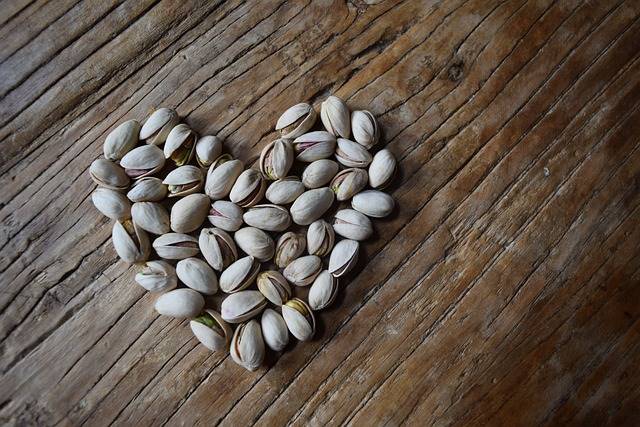
Pistachios 101
Where Do Pistachios Come From?
Pistachios are a universally liked nut enjoyed by people worldwide. Grown only in specific parts of the world and the US, the pistachio is native to the Middle East and Central Asia. Although pistachio trees were introduced to the US only in the 19th century, their rich history dates back thousands of years ago.
How Do Pistachios Grow?
The ideal conditions for a pistachio tree—let alone a grove of thousands of acres— to thrive include:
- Long, hot, dry summers – the perfect temperature is between 77-97 in the summer
- Cold winters – interestingly, the “winter chill requirement” is one of the most critical factors to a thriving pistachio tree. They need a minimum of 1000 hours of temperatures below 45 degrees during the winter.
- Well-draining soil – the trees can’t tolerate wet, heavy soil, resulting in the tree’s roots rotting and failing to reach their production potential.
- Males and female trees interspersed to pollinate – a windy climate is vital for the necessary pollen process.
- Pistachio farms typically do well in Texas, New Mexico, Arizona, and California, with California being the largest pistachio producer in the US.
Pistachio trees grow up to 20-30 feet at maturity but grow slowly. It can take up to 7-8 years to bear fruit. In some instances, trees do not reach peak pistachio production until they are close to 20 years old. Like pecan trees, pistachio trees are deciduous, meaning they lose their leaves in the fall.
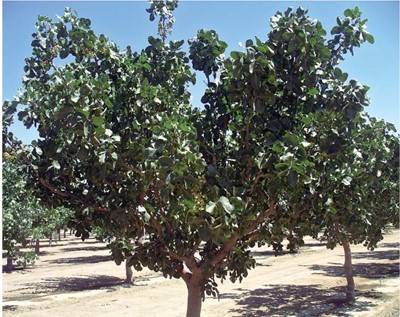
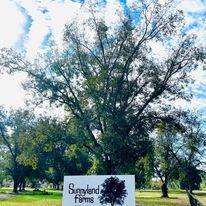
Source: University of California, Agriculture & Natural Resources
Source: Sunnyland Farms
Similarly to pecan trees, pistachios require maintenance. They must get regular watering, fertilizing, and pruning in order to produce as high of a yield as possible. A healthy, mature pistachio tree can produce between 20-50 pounds of pistachios annually. Compare that to a healthy and mature pecan tree that produces 200-250 pounds of pecans annually.
Pistachio Harvesting
Pistachio harvest begins in early September and concludes by mid-October. While the husk starts green, they take on a rosy pink hue over the season when they are ready to be harvested. When the husks begin to split, they reveal the white shell, which consumers are familiar with seeing. And inside the shell is the edible, delicious kernel.
Since many people don’t realize that, like pecans, pistachios are double protected, let’s break each component down:
- The pistachio husk, also known as the hull or pericarp, is the outermost layer you see growing in a cluster on the trees. This gummy husk is typically removed during the processing of pistachios by either a special soaking process or between rubberized belts.
- The pistachio shell, the hard outer covering that encases the edible kernel, is inside the husk. It is the protective layer that shields the seed from external elements. Most shells open naturally as the kernel matures, generally while the hull remains closed.
- Once the shell is cracked open, you get the edible, crunchy, delicious pistachio kernel or the seed of the pistachio tree.
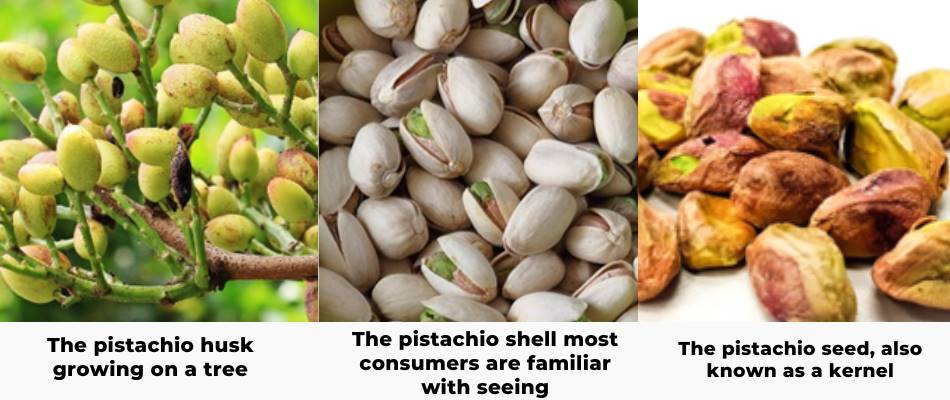
Where to Buy the Best Pistachios Online?
When buying the best, freshest pistachios, you want to know rigorous standards have been upheld. Pistachio freshness and quality can be compromised if:
- There are long delays between harvesting and hulling – this means that the husk should be removed very soon after the nut comes off the tree
- Pistachios aren’t dried for long enough, at the proper temperature to reach a desired moisture content level
- Excessively high drying temperatures
- Harvest pistachios too late
To maintain freshness and quality, pistachios must go through the proper steps in the journey from tree to your door. Here are a few pistachio buying-facts:
- The best pistachios are never dyed red. This was a process often used to mask discoloration and deterioration.
- The best pistachios are never bleached. This often makes them look more uniform in color, especially if they weren't appropriately harvested.
- Fresh, gourmet pistachios are roasted to perfection and not over-roasted, which will make them bitter and dry.
- Colossal pistachios refer to the size of the pistachio kernel. "Colossal" is the largest size in the grading system (about 25% larger) and is preferred by customers who want a more pronounced flavor and more substantial product for their money.
- We recommend buying pistachios in bulk to get the best price.
The difference in freshness and quality is why the price for pistachios varies widely. Buying the best pistachios means knowing exactly where your food comes from. At Sunnyland Farms, we uphold the highest standards regarding freshness and quality and only sell premium pistachios from a vetted grower we work with personally. As with everything we do, we have our hands in every part of the process.
Here is a quick pistachio-buying guide:
| Fresh Pistachios | Old/Stale Pistachios | |
|---|---|---|
| Texture | Firm crunch, crispy, and easy to open. | Soft or mushy; conversely, a bad pecan can also be hard as a rock. |
| Flavor | Rich, nutty, and slightly sweet. | Inconsistent, bitter, stale, or flavorless. Over-salted. Bad pistachios taste “off” or dry. |
| Visual | A vibrant, beautiful green color. Pistachios are small, but differ depending on their grading. | Discolored, brown with a tinge of green or overly dark, shriveled or even moldy. |
| Smell | A subtle aroma that combines earthy and nutty notes. | A rancid, or sour smell |
Nutrients and Health Benefits of Pistachios
Pistachios pack a mighty health punch for their small size. They’re a great source of nutrients, vitamins, and minerals. Here are some of the health benefits you get from consuming pistachios:
- Pistachios are a good source of protein and fiber, which works to keep your digestive system regular.
- Pistachios are rich in vitamin B6 and vitamin E, which are important for skin health.
- They contain potassium and magnesium, which are minerals that help with mood regulation.
- They contain healthy fats (when consumed in moderation), which have been shown to promote heart health.
- They have a low glycemic index, meaning they don't cause sharp spikes in blood sugar levels.
Pistachios: Shelled or Unshelled?
Are pistachios better shelled or unshelled? It depends on how you plan to consume or use the pecans. For example:
- In Shell (also known as Unshelled, or Un-shelled) Benefits: Less expensive because there is less labor and resources involved, longer shelf life.
- No Shell (also known as Shelled) Benefits: More convenient, less messy, quicker for baking and cooking purposes.
At Sunnyland, our In-Shell Colossal Pistachios are more often purchased than our Shelled Pistachios, but this is just a matter of preference.
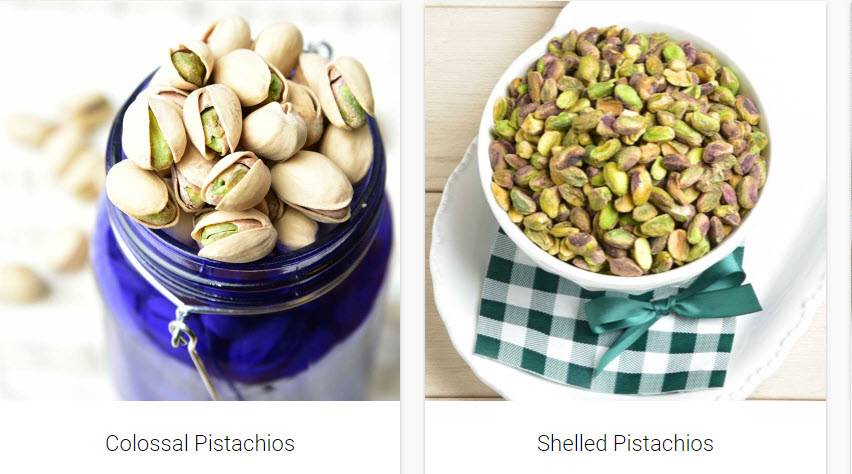
If you’re seeking convenience, shelled pistachios are the way to go. If you want to enjoy this delicious treat properly, in-shell is a fantastic choice.
Pistachio Top FAQs
Why are pistachios green?
Pistachios are the “colorful” nut, owing their green and purple hue to antioxidants.
Are pistachios healthy?
Yes! Pistachios provide a rich nutritional benefit due to the combination of essential nutrients, including protein, fiber, magnesium, thiamin, and phosphorus, contributing to a wholesome diet. They are also a source of vitamin B6, copper, and manganese, making them a micronutrient powerhouse (when consumed in moderation, of course).
Why do experts always say “when consumed in moderation” when referring to nuts?
A handful of nuts can go a long way! Because nuts can be high in calories and fat, you don’t want to overdo it. However, remember not all “fat” is created equal. Quality nuts are a good source of healthy fats, unlike processed foods and packaged snacks, which contain unhealthy fats.
What else is in the pistachio family?
Pistachios have well-known botanical cousins in their Anacardiaceae family: cashews, mangos, and the sumac spice. While these have very different fruits, they share the same basic structure.
Which are the best pistachios to buy online?
Tracing the origin of online food products is critical to ensuring you’re buying the highest quality, which goes for pistachios. If you want the best, try the Colossal pistachios – they are much bigger than industry standard. When you get them from a reputable source like Sunnyland Farms, you can guarantee they have been vetted to standards, stored properly, and come from the best dry-roasting experts.
Should you buy organic pistachios?
While we love our fellow organic farmers, not everyone has the budget to buy everything organic. Also, not every food item necessarily needs to be organic, including some nuts. Like pecans, pistachios are grown on the tree “double shelled”: first with the husk, then with the shell.
Pecan vs. Pistachio Showdown
And finally, to wrap up, let’s have a friendly showdown between the pecan and pistachio:
- Pistachio Pesto or Pecan Pesto?
- Pistachio-Crusted Salmon or Pecan-Crusted Salmon?
- Pistachio Ice Cream or Butter Pecan Ice Cream?
- Pistachio Baklava or Pecan Pie?
- Pistachio Brittle or Pecan Pralines?
- Pecan Sandies or Pistachio Macaroons?
Really though, why choose when you can have both? Pecans and pistachios go fantastic together in:
- Nut Mixes and Trail Mix
- Nutty Granola and Oatmeal
- Pistachio Bark and Pecan Bark
And finally, if you're looking for a delicious pistachio recipe, check out our take on a classic, the Sweet Citrus Pistachio Cheeseball made with cranberries and orange marmalade. It's irresistible!
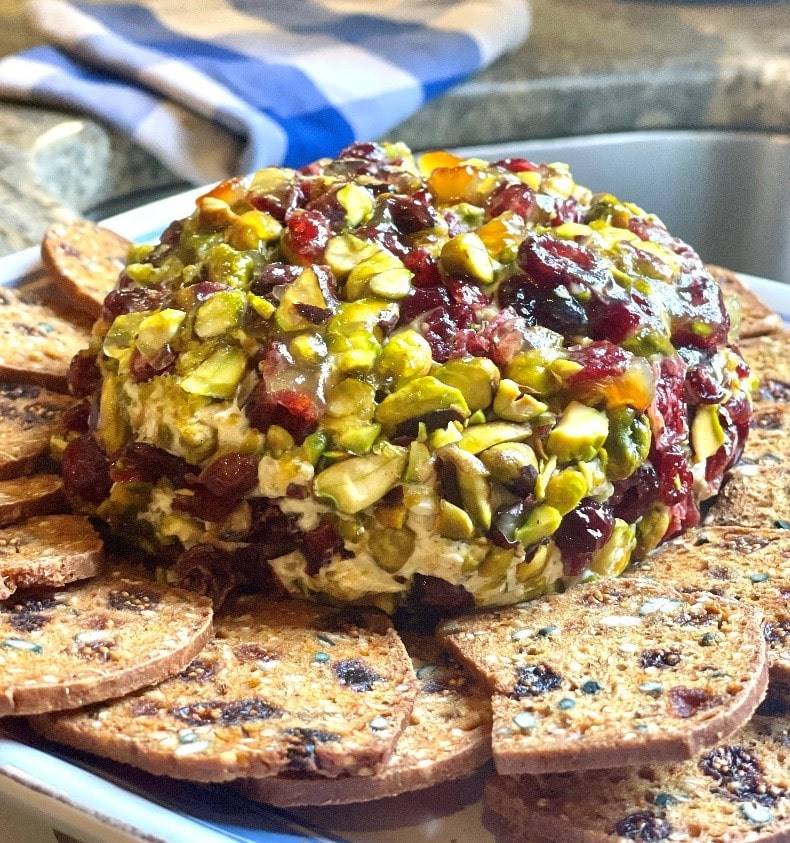
Have we left you drooling yet?